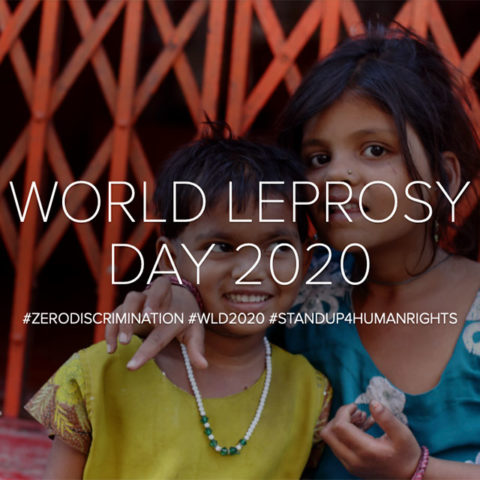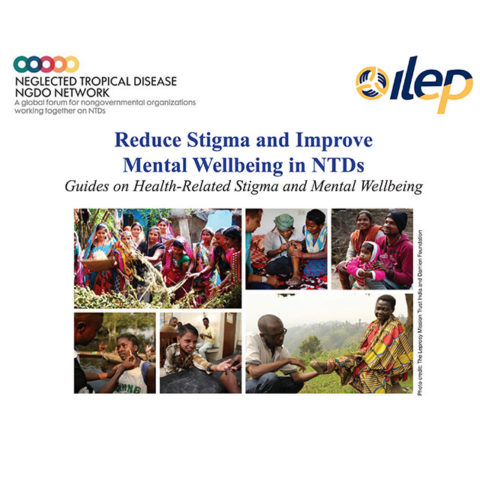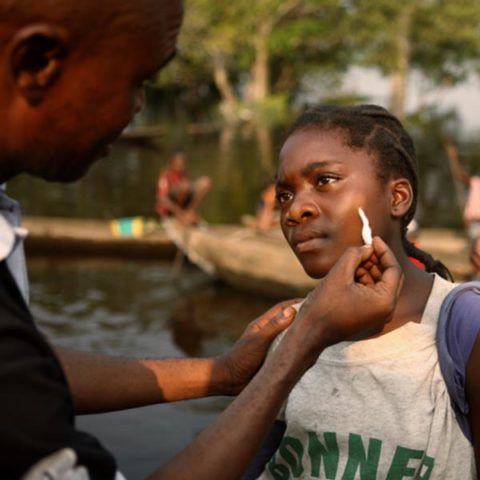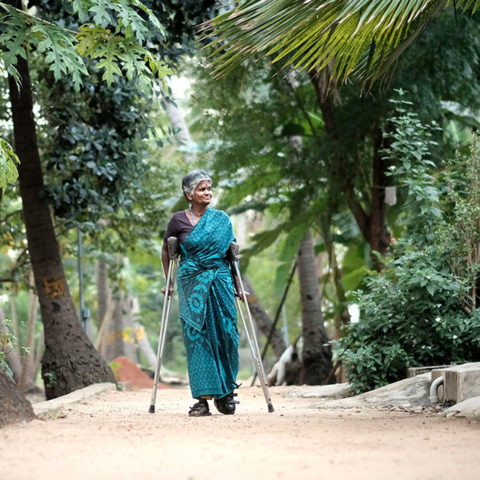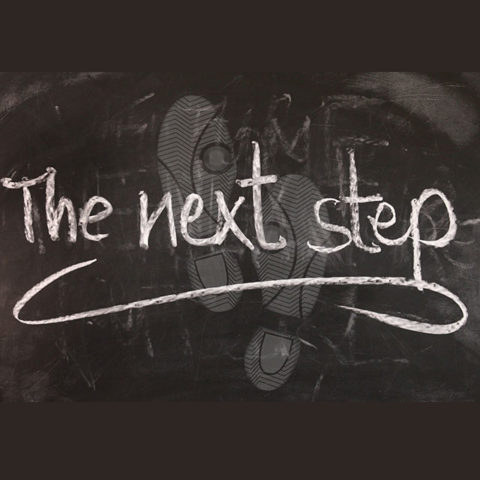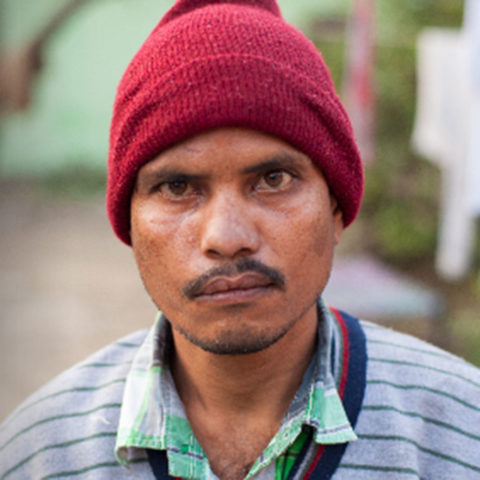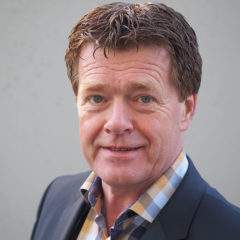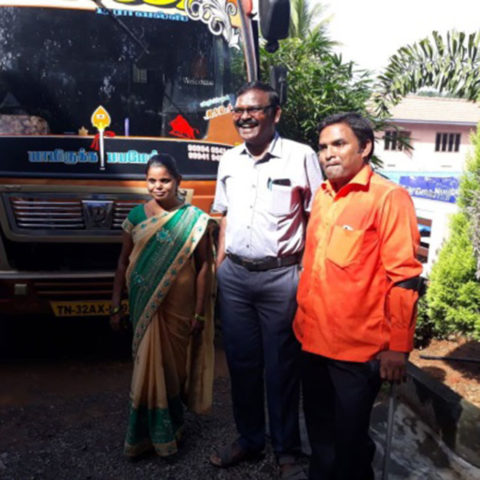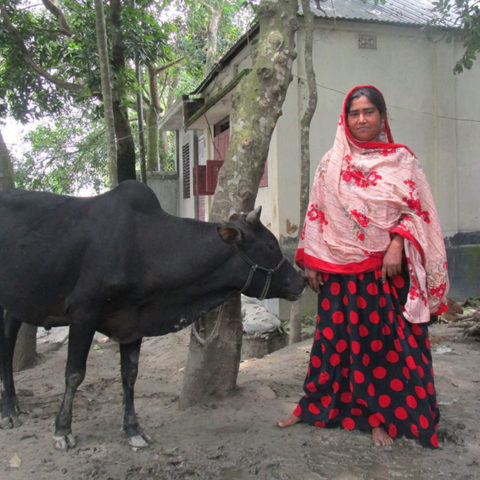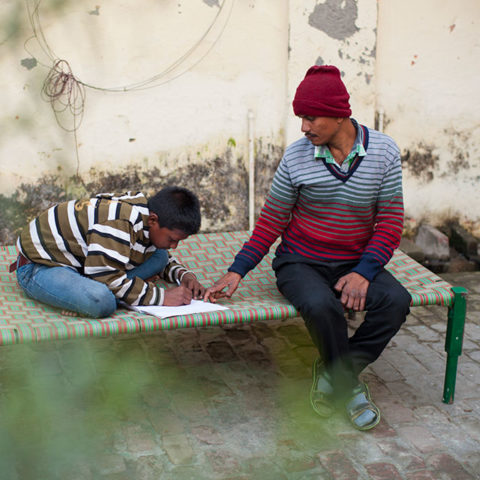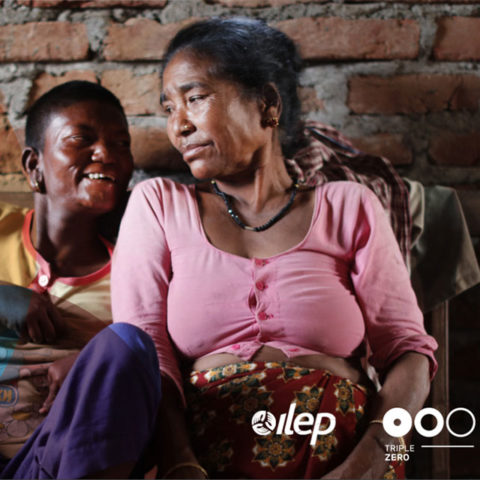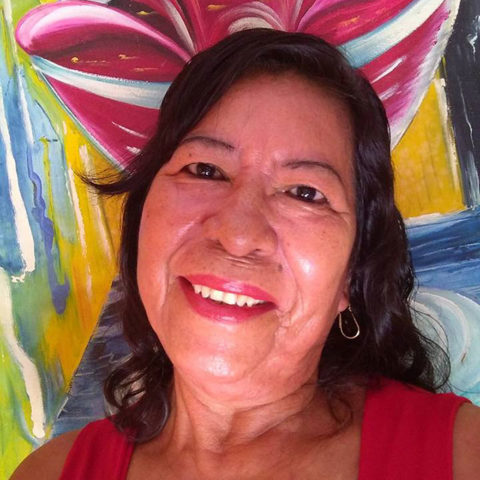| Alagappa University Act, 19851 | India | Segregation/separation | Suffering from leprosy is a ground for disqualification from nomination or membership of any authority of the University. Active law, under challenge in the PIL in the SC of India
|
| Alien Occupation Act, B.E. 2551 (2008) | Thailand | Employment | Excludes people diagnosed with leprosy from obtaining work permits. If an applicant is diagnosed with leprosy with no severe active/complications, a work permit will be granted along with treatment. If severe active/complications are found, work permit is denied and treatment is provided before deportation.
|
| Allahabad High Court Rules, 1952 | India | Employment | A person suffering from leprosy is disqualified from enrolment as a pleader or mukhtar. Active rule, under challenge in the PIL at the SC of India
|
| Andhra Pradesh Charitable and Hindu Religious Institution and Endowments Act, 1987 | India | Segregation/separation | Disqualification from membership or continuation on the Trust for persons suffering from leprosy. Active law, under challenge in the PIL at the SC of India
|
| Andhra Pradesh Co-Operative Societies Act, 1964 | India | Employment | Disqualified from being or continuing as a member of the committee if suffering from leprosy. Active law, under challenge in the PIL in SC of India
|
| Andhra Pradesh Excise (Grant of Licence of Selling by In-House and Conditions of Licence) Rules, 2005 | India | Employment | Bar on persons suffering from leprosy to acquire a license if they are to personally handle the stocks. Active rule, under challenge in the PIL at the SC of India
|
| Andhra Pradesh Excise (Lease of Right to Sell Liquor in Retail) Rules, 1969 | India | Employment | Prohibition on persons suffering from leprosy to enter auction houses leading to segregation and disqualification from getting a lease to a person suffering from leprosy especially where the person is directly handling liquor. Active rule, under challenge in the PIL at the SC of India
|
| Andhra Pradesh Excise Act, 1968 | India | Employment | Prohibition on employment of persons suffering from leprosy with the prescription of a punishment for contravention. Active act, under challenge in the PIL at the SC of India
|
| Andhra Pradesh Habitual Offenders Rules, 1965 | India | Segregation/separation | Provides for sending a prisoners suffering from leprosy to a leprosy asylum. Active rule, under challenge in the PIL at the SC of India
|
| Andhra Pradesh Indian Liquor & Foreign Liquor Rules, 1970 | India | Employment | Bar on persons suffering from leprosy to acquire a license if they are to personally handle the stocks and for employment in this business. Active rule, under challenge in the PIL at the SC of India
|
| Andhra Pradesh Medical Practitioners Registration Act, 1968 | India | Employment | Disqualification from being a member of the council if affected by leprosy. Active law, under challenge in the PIL at the SC of India
|
| Andhra Pradesh Municipalities Act, 1965 | India | Segregation/separation | Not eligible to stand for election or continue on a post in the municipality if suffering from leprosy and also to expel persons affected from market places leading to segregation and denial of political participation. Active law, under challenge in the PIL at the SC of India
|
| Andhra Pradesh Prevention of Begging Act, 1977 | India | Segregation/separation | Removal of people affected by leprosy from beggary homes to leprosy asylums. Active law, under challenge in the PIL at the SC of India
|
| Andhra Pradesh Public Libraries Act, 1969 | India | Employment | Disqualified from being a member of the Zilla Grandhalaya Samstha if suffering from leprosy. Active law, under challenge in the PIL at the SC of India
|
| Andhra Pradesh Universities Act, 1991 | India | Segregation/separation | Suffering from leprosy is a ground for disqualification from nomination or membership of any authority of the University and also removal from a position of authority. Active law, under challenge in the PIL in the SC of India
|
| Assam Prevention of Begging Act, 1964 | India | Segregation/separation | Removal of people affected by leprosy from beggary homes to leprosy asylums. Active law, under challenge in the PIL at the SC of India
|
| Banaras Hindu University Act, 1915 | India | Segregation/separation | Suffering from contagious leprosy is a ground for disqualification from nomination or membership of any authority of the University and also removal from a position of authority for non-teaching staff. Active law, under challenge in the PIL in the SC of India
|
| Bangalore Metro Railway (Carriage and Ticket) Rules, 2011 | India | Public transportation | Restriction on travel of persons with leprosy. Active rule, under challenge in the PIL at the SC of India
|
| Bengal Vagrancy Act, 1943 | India | Segregation/separation | Separation of people affected by leprosy from other vagrants in the home. Active law, under challenge in the PIL at the SC of India
|
| Bharathiar University Act, 1981 | India | Segregation/separation | Suffering from leprosy is a ground for disqualification from nomination or membership of any authority of the University. Active law, under challenge in the PIL in the SC of India
|
| Bharathidasan University Act, 1981 | India | Segregation/separation | Suffering from leprosy is a ground for disqualification from nomination or membership of any authority of the University and also removal from a position of authority. Active law, under challenge in the PIL in the SC of India
|
| Bihar Document Writers Licensing Rules, 1968 | India | Employment | Disqualification from grant of license if affected by leprosy. Active rule, under challenge in the PIL at the SC of India
|
| Bihar Prevention Of Beggary Act, 1951 | India | Segregation/separation | Maybe segregated on the grounds infectious and contagious diseases, which ordinarily includes leprosy. Active law, under challenge in the PIL in the SC of India
|
| Bye-Laws of Pradeshik Co- Operative Dairy Federation Limited, 1979 | India | Employment | Disqualification for being or continuing as a member of the Board of Directors if suffering from leprosy. Active bye-law, under challenge in the PIL in the SC of India
|
| Cabinet decision no. 28 of 2010 | United Arab Emirates | Immigration related laws | People affected by leprosy are not allowed to enter the country and any person diagnosed with leprosy is deported.
|
| Chennai Metro Railway (Carriage and Ticket) Rules, 2014 | India | Public transportation | Restriction on travel of persons with leprosy. Active rule, under challenge in the PIL at the SC of India
|
| Chhattisgarh Municipalities Act, 1961 | India | Voting related | Not eligible to stand for election if suffering from an infectious form of leprosy leading to segregation and denial of political participation. Active law, under challenge in the PIL at the SC of India
|
| Citizenship | USA | Immigration related laws | People affected by leprosy are inadmissible
|
| City of Rangoon Municipal Act, 1922 | Myanmar | Segregation/separation | Municipal Corporation is allowed to establish segregated ‘asylums’ for persons affected by leprosy to whom ‘pauper lepers’ can be sent.
|
| Coimbatore City Municipal Corporation Act, 1981 | India | Segregation/separation | Duty to expel persons suffering from leprosy from market areas leading to segregation. Active law, under challenge in the PIL at the SC of India
|
| Commercial Bathhouses Regulation (Cap. 132I) | Hong Kong | Segregation/separation | Persons affected by communicable diseases, including leprosy, are denied access to commercial bathhouses.
|
| Delhi Land Reforms Act, 1954 | India | Voting related | Not eligible to stand for election or continue in office if suffering from leprosy leading to segregation and denial of political participation. Active law, under challenge in the PIL at the SC of India
|
| Delhi Municipal Corporation Act, 1957 | India | Segregation/separation | Duty to expel persons suffering from leprosy from market areas leading to segregation. Active law, under challenge in the PIL at the SC of India
|
| Delhi Panchayat Raj Act, 1954 | India | Voting related | Not eligible to stand for election or continue in office if suffering from leprosy leading to segregation and denial of political participation. Active law, under challenge in the PIL at the SC of India
|
| Delhi Petty Offences (Trial by Special Metropolitan Magistrates) Rules, 1998 | India | Employment | A person suffering from leprosy is disqualified from continuing in the post. Active rule, under challenge in the PIL at the SC of India
|
| Delhi Prisons (Treatment of Convicts Sentenced to Simple Imprisonment, Death, Female Prisoners, Youthful Prisoners, Leper Prisoners and Lunatic Prisoners) Rules, 1988 | India | Segregation/separation | Provides for the segregation and separation of prisoners affected by leprosy and destruction of clothing and bedding used by such prisoner. Active rule, under challenge in the PIL at the SC of India
|
| Dissolution of Muslim Marriage Act, 1939 | Pakistan | Marriage/Divorce | Women are entitled to divorce their husbands if “he has been insane for a period of two years or is suffering from leprosy or a virulent venereal disease”
|
| Dr B.R Ambedkar Open University Act, 1982 | India | Segregation/separation | Suffering from leprosy is a ground for disqualification from nomination or membership of any authority of the University. Active law, under challenge in the PIL in the SC of India
|
| Dravidian University Act, 1997 | India | Segregation/separation | Suffering from leprosy is a ground for disqualification from nomination or membership of any authority of the University. Active law, under challenge in the PIL in the SC of India
|
| Employment Service Act (Article 48) | Taiwan | Immigration related laws | Based on the Regulations Governing Management of the Health Examination of Employed Aliens, No visa, employment permit or extension of employment permit shall be issued to any individual failing in any one item of the health examination.
|
| Environmental Health Services Regulations, 2003 | Dominica | Segregation/separation | Compulsory segregation of people affected by leprosy (lists leprosy as a First Schedule disease).
|
| Family Courts (Patna High Court) Rules, 2000] | India | Marriage/Divorce | Virulent and incurable form of leprosy is a ground for divorce. Active rule, under challenge in the PIL at the SC of India
|
| Federal Law Number 28 of 2005 (Article 112) | United Arab Emirates | Marriage/Divorce | If one of the parties has leprosy, obstruction of genital canals, or insanity before or during the marriage, the spouse could ask for the marriage’s rescission.
|
| GCA 10 | Guam | Segregation/separation | Sections 3309-3321; 3328; and 3333 allow for several forms of discrimination on the basis of leprosy. These include requirement to isolate; police enforcement of isolation; destruction of property; closure of schools; specific disposal of corpses; restrictions to enter country.
|
| Goa University Act, 1984 | India | Segregation/separation | Suffering from contagious leprosy is a ground for disqualification from nomination or membership of any authority of the University and also removal from a position of authority for non-teaching staff and academic staff. Active law, under challenge in the PIL in the SC of India
|
| Goa, Daman and Diu Prevention of Begging Act, 1972 | India | Segregation/separation | Removal of people affected by leprosy from beggary homes to leprosy asylums. Active law, under challenge in the PIL at the SC of India
|
| Greater Hyderabad Municipal Corporation Act, 1955 | India | Voting related | People affected by leprosy are not eligible to stand for election. Active law, under challenge in the PIL at the SC of India
|
| Haryana Prevention of Beggary Act, 1971 | India | Segregation/separation | Removal of people affected by leprosy from beggary homes to leprosy asylums. Active law, under challenge in the PIL at the SC of India
|
| Haryana Shri Mata Mansa Devi Shrine Act, 1991 | India | Segregation/separation | Disqualification from membership on the Board for persons suffering with contagious leprosy. Active law, under challenge in the PIL at the SC of India
|
| Hindu Marriage (High Court of Meghalaya) Rules 2013 | India | Marriage/Divorce | Virulent and incurable form of leprosy is a ground for divorce. Active rule, under challenge in the PIL at the SC of India
|
| Hindu Religious Institutions and Charitable Endowments Act, 1997 | India | Segregation/separation | Disqualification from membership and removal from continuation on the Board for persons suffering from leprosy. Active law, under challenge in the PIL at the SC of India
|
| Immigrant visa | Philippines | Immigration related laws | Leprosy is classified as Class A disease (Dangerous or contagious), people affected by leprosy are denied immigration visa – Law under review
|
| Immigration Act, B.E. 2522 (1979) | Thailand | Immigration related laws | Excludes people diagnosed with leprosy from entering and taking up residency in the Kingdom
|
| Immigration Control Act 7 of 1993 | Namibia | Immigration related laws | People affected by leprosy are not allowed to enter the country.
|
| Infectious Disease Act, 1977 | Singapore | Segregation/separation | People affected by leprosy may be detained and isolated in hospitals or other places
|
| Inland Steam Vessels (Madhya Pradesh) Rules, 1962 | India | Public transportation | Restriction and separation of person suffering from leprosy aboard vessels. Active rule, under challenge in the PIL at the SC of India
|
| Internal Security Act | Singapore | Segregation/separation | If a detained person appears to the officer-in-charge to be a leper, the officer-in-charge may, by order in writing, direct his removal to any Government hospital, there to be kept and treated until cured of his leprosy.
|
| Jammu and Kashmir Dissolution of Muslim Marriages Act, 1999 | India | Marriage/Divorce | Suffering from leprosy is a ground for divorce. Active law, under challenge in the PIL at the SC of India
|
| Jammu and Kashmir Hindu Adoptions and Maintenance Act, 1960 | India | Marriage/Divorce | The wife shall have the right to live separately from her husband if he is suffering from a virulent form of leprosy. Active law, under challenge in the PIL at the SC of India
|
| Jammu and Kashmir Hindu Marriage Act, 1980 | India | Marriage/Divorce | Virulent and incurable form of leprosy is a ground for divorce. Active law, under challenge in the PIL at the SC of India
|
| Jammu and Kashmir Motor Vehicles Act, 1998 | India | Segregation/separation | People affected by leprosy are not eligible to obtain a driving license or drive a public service vehicle
|
| Jammu and Kashmir Shri Amarnath Ji Shrine Act, 2000 | India | Segregation/separation | Disqualification from membership on the Board for persons suffering with contagious leprosy. Active law, under challenge in the PIL at the SC of India
|
| Jammu and Kashmir Shri Mata Vaishno Devi Shrine Act, 1988 | India | Segregation/separation | Disqualification from membership on the Board for persons suffering with contagious leprosy. Active law, under challenge in the PIL at the SC of India
|
| Jawaharlal Nehru University Act, 1966 | India | Segregation/separation | Suffering from contagious leprosy is a ground for disqualification from nomination or membership of any authority of the University and also removal from a position of authority for non-teaching staff and academic staff. Active law, under challenge in the PIL in the SC of India
|
| Karnataka Municipalities (Regulation and Inspection of Lodging and Boarding Houses) (Model) Bye-Laws, 1966 | India | Segregation/separation | No person affected by leprosy to be allowed inside, to occupy, handle or work in the designated areas under the Act. Active law, under challenge in the PIL at the SC of India
|
| Karnataka Municipalities Act, 1964 | India | Segregation/separation | Duty to expel persons suffering from leprosy from market areas leading to segregation. Active law, under challenge in the PIL at the SC of India
|
| Karnataka Rajya Dr Gangubai Hangal Sangeetha Mattu Pradarshaka Kalegala Vishwavidyalaya Act, 2009 | India | Segregation/separation | Removal of persons affected from membership of the university. Active law, under challenge in a Public Interest Litigation (PIL) being heard in the Supreme Court (SC) of India on discriminatory laws against persons affected by leprosy.
|
| Karnataka Samskrita Vishwavidyalaya Act, 2009 | India | Segregation/separation | Removal of persons affected from membership of the university. Active law, under challenge in the PIL in the SC of India
|
| Kerala Document Writers’ Licence Rules, 1960 | India | Employment | A leper to be disqualified from getting a license leading to loss of employment opportunity. Active rule, under challenge in the PIL in the SC of India
|
| Kerala Fishermen Welfare Societies (Determination of Strength of Committees and Conduct of Election) Rules, 1980 | India | Employment | Disqualification from being a member of the committee if affected by leprosy. Active rule, under challenge in the PIL at the SC of India
|
| Kerala Habitual Offenders Rules, 1963 | India | Segregation/separation | Provides for a registered offender to be sent to a leprosy asylum on his/her choice with restriction of movement out of there. Active rule, under challenge in the PIL at the SC of India
|
| Kerala Kahadi and Village Industries Board Act, 1957 | India | Employment | Disqualified from being or continuing as a member of the Board if suffering from leprosy. Active Act, under challenge in the PIL in SC of India
|
| Kerala Places of Public Resort Rules, 1965 | India | Segregation/separation | Restriction on allowance of people affected by leprosy in public resorts and for mandatory reporting to health officer. Active rule, under challenge in the PIL at the SC of India
|
| Law no. 76-03 | Senegal | Segregation/separation | In 1976, Law 65 -128 about leprosy villages replaced law 76-03 which re-designated leprosy villages across Senegal to “villages of social rehabilitation”. However, they are still stigmatised and not well integrated into local communities and villages.
|
| Leper Enactment Act 1926 | Malaysia | Segregation/separation | Compulsory notification and isolation of leprosy patients
|
| Lepers Act 1937 | Dominica | Segregation/separation | Compulsory segregation of people affected by leprosy
|
| Leprosy Suppression Ordinance, 1923 | Papua New Guinea | Segregation/separation | Forced segregation and isolation of leprosy patients
|
| Loi 98-036 | Mali | Segregation/separation | High Commissioner of the region or the District of Bamako has the right to order the hospitalisation of people diagnosed with leprosy.
|
| Madhya Bharat Shri Mahakaleshwar Temple Act, 1953 | India | Segregation/separation | Disqualification from membership on the Board for persons suffering with contagious leprosy and removal of any panda (pandit working at the temple) if suffering from leprosy. Active law, under challenge in the PIL at the SC of India
|
| Madhya Pradesh Bhiksha Vrittinivaran Adhiniyam, 1973 | India | Segregation/separation | Removal of people affected by leprosy from beggary homes to leprosy asylums. Active law, under challenge in the PIL at the SC of India
|
| Madhya Pradesh Gram Panchayat (Regulation of Slaughter House) Rules, 1998 | India | Segregation/separation | Restrictions on persons suffering from leprosy to enter slaughter house premises. Active rule, under challenge in the PIL at the SC of India
|
| Madras Panchayats Act,1958 | India | Voting related | Not eligible to stand for election or continue in office if suffering from leprosy leading to segregation and denial of political participation. Active law, under challenge in the PIL at the SC of India
|
| Madras University Act, 1923 | India | Segregation/separation | Suffering from contagious leprosy is a ground for disqualification from nomination or membership of any authority of the University and also removal from a position of authority. Active law, under challenge in the PIL in the SC of India
|
| Madurai- Kamaraj University Act, 1965 | India | Segregation/separation | Suffering from leprosy is a ground for disqualification from nomination or membership of any authority of the University. Active law, under challenge in the PIL in the SC of India
|
| Maharashtra Prevention of Begging Act, 1959 | India | Segregation/separation | Removal of people affected by leprosy from beggary homes to leprosy asylums. Active law, under challenge in the PIL at the SC of India
|
| Meat Industries Act 1996 (NT) s 42; Meat Industries Regulations 1997 (NT) r 64, sch 3 | Australia | Segregation/separation | Persons who have reason to believe they are infected with or affected by leprosy must not enter or remain at an establishment from which meat for human consumption is dispatched; a holder of a licence permitting the dispatch of meat for human consumption who has reason to believe a person is infected with or affected by leprosy, must not permit that person to enter or remain at an establishment operated under that licence.
|
| Metro Railways (Carriage and Ticket) Rules, 2014 | India | Public transportation | Restriction on travel of persons with leprosy. Active rule, under challenge in the PIL at the SC of India
|
| Midwives Registration Ordinance (Cap. 162) | Hong Kong | Employment | The regulatory authority of midwives having the discretion to prohibit registered midwives suffering from any such scheduled infectious disease from attending women in childbirth.
|
| Migration Act 1958 (Cth) | Australia | Immigration related laws | Requirement of persons with leprosy to provide a health undertaking in order to obtain visa; undertaking requirements include reporting to the health clinic to which they are referred, placing themselves under the health clinic’s professional supervision, and undergoing any required course of treatment or investigation.
|
| Mother Teresa Women’s University Act, 1984 | India | Segregation/separation | Suffering from leprosy is a ground for disqualification from nomination or membership of any authority of the University. Active law, under challenge in the PIL in the SC of India
|
| Nagarjuna University Act, 1976 | India | Segregation/separation | Suffering from contagious leprosy is a ground for disqualification from nomination or membership of any authority of the University and also removal from a position of authority for non-teaching staff and academic staff. Active law, under challenge in the PIL in the SC of India
|
| Nathdwara Temple Act, 1959 | India | Segregation/separation | Disqualification from membership on the Board for persons suffering from leprosy. Active law, under challenge in the PIL at the SC of India
|
| Nepal’s Civil Code (Mulki Ain) 2074 B.S. | Nepal | Marriage/Divorce | According to Part 3, Family Law, Article 1, Marriage Law, Code 71, 2 (c), it is against the law to marry (by deceit) or assist to marry off (by deceit) people with hearing/speaking disability, blind and leprosy affected. Law under review
|
| Non-immigrant or immigrant visa | USA | Immigration related laws | People affected by leprosy are not eligible for visas
|
| North-Eastern Hill University Act, 1973 | India | Segregation/separation | Suffering from contagious leprosy is a ground for disqualification from nomination or membership of any authority of the University and also removal from a position of authority for non-teaching staff and academic staff. Active law, under challenge in the PIL in the SC of India
|
| Notifiable disease | USA | Immigration related laws | |
| Nurses (Registration and Disciplinary Procedure) Regulations (Cap. 164A) | Hong Kong | Employment | Medical certificate required for a nurse to certify that she is not suffering from any such disease (as part of her application to register)
|
| Nurses and Midwives Act, 1953 | India | Employment | Disqualification for being or continuing as a member of the council if affected by leprosy. Active law, under challenge in the PIL at the SC of India
|
| On the Education of the Leper, 1960 | Niger | Segregation/separation | “If the search for the Hansen bacillus is positive, the child will be temporarily evicted from the school for a period of one year”
|
| Orissa (Licensing of) Deed Writers’ Rules, 1979 | India | Employment | Disqualification from grant of license to a person suffering from leprosy. Active law, under challenge in the PIL in SC of India
|
| Orissa Municipal Act, 1950 | India | Segregation/separation | Leprosy patients are not eligible to stand for election or continue in a post in the municipality and can also be expelled from market places. Active law, under challenge in the PIL at the SC of India
|
| Orissa Municipal Corporation Act, 2003 | India | Voting related | Not eligible to stand in elections of a corporator if affected by leprosy at the time of nomination leading to segregation and denial of political participation. Active law, under challenge in the PIL in the SC of India
|
| Orissa Professional Typists for Civil and Criminal Courts (Registration) Rules, 1981 | India | Employment | Not eligible to register or continue as a typist if a leprosy patient. Active law, under challenge in the PIL in SC of India
|
| Osmania University Act, 1959 | India | Segregation/separation | Suffering from leprosy is a ground for disqualification from nomination or membership of any authority of the University and also removal from a position of authority. Active law, under challenge in the PIL in the SC of India
|
| Pakistan Fish Inspection and Quality Control Act, 1997 | Pakistan | Employment | No Person who is suffering from leprosy, tuberculosis, polio or such other contagious diseases, shall handle, carry or process fish or work in a fish processing and packing plant or establishment
|
| Pondicherry Excise Rules, 1970 | India | Employment | Discontinuation of the licence if the person is suffering from leprosy and restriction on employing person suffering from leprosy. Active rule, under challenge in the PIL at the SC of India
|
| Pondicherry University Act, 1985 | India | Segregation/separation | Suffering from leprosy is a ground for disqualification from nomination or membership of any authority of the University and also removal from a position of authority for non-teaching staff and academic staff. Active law, under challenge in the PIL in the SC of India
|
| Potti Sreeramulu Telugu University Act, 1985 | India | Segregation/separation | Suffering from leprosy is a ground for disqualification from nomination or membership of any authority of the University. Active law, under challenge in the PIL in the SC of India
|
| Prevention and Control of Disease Ordinance (Cap. 599) | China | Segregation/separation | Leprosy is expressly defined as a “Scheduled Infectious Disease” in HK’s main public health legislation. This definition includes diseases such as COVID-19, Anthrax, Chickenpox and Cholera.
|
| Prisons Act, 1933 | Singapore | Segregation/separation | Where a prisoner appears to be suffering from leprosy, the Minister may, by order in writing, direct his removal to any hospital or place specified by the Director of Medical Services.
|
| Puducherry Municipalities Act, 1973 | India | Segregation/separation | Duty to expel persons suffering from leprosy from market areas leading to segregation. Active law, under challenge in the PIL at the SC of India
|
| Punjab Municipal Corporation Act, 1976 | India | Segregation/separation | Duty to expel persons suffering from leprosy from market areas leading to segregation. Active law, under challenge in the PIL at the SC of India
|
| Railways Act, 1906 | Singapore | Public transportation | Persons suffering from leprosy are not allowed to travel by railway
|
| Republic Act No. 4073, 1964 | Philippines | Segregation/separation | Segregation and isolation of persons affected by leprosy.
|
| Shri Sanwaliaji Temple Act, 1992 | India | Segregation/separation | Disqualification from membership on the Board for persons suffering from leprosy. Active law, under challenge in the PIL at the SC of India
|
| Shri Shiv Khori Shrine Act, 2008 | India | Segregation/separation | Disqualification from membership on the Board for persons suffering with contagious leprosy. Active law, under challenge in the PIL at the SC of India
|
| Sri Krishnadevaraya University Act, 1981 | India | Segregation/separation | Suffering from contagious leprosy is a ground for disqualification from nomination or membership of any authority of the University and also removal from a position of authority for non-teaching staff and academic staff. Active law, under challenge in the PIL in the SC of India
|
| Sri Venkateswara Vedic University Act, 2006 | India | Segregation/separation | Suffering from leprosy is a ground for disqualification from nomination or membership of any authority of the University. Active law, under challenge in the PIL in the SC of India
|
| Statute Law Chapter 238 Lepers Act, 1928 | Bahamas | Employment | |
| Swimming Pools Regulation | Hong Kong | Segregation/separation | Persons affected by communicable diseases, including leprosy, are denied access to private (Cap. 123CA) and public (Cap. 132BR) swimming pools.
|
| Tamil Nadu Excise Act, 1971 | India | Employment | Provides for non-employment of persons suffering from leprosy. Active law, under challenge in the PIL at the SC of India
|
| Tamil Nadu Hindu Religious and Charitable Endowments Act, 1959 | India | Segregation/separation | Disqualification from membership or continuation on the Trust for persons suffering from leprosy. Active law, under challenge in the PIL at the SC of India
|
| Tamil Nadu Prevention of Begging Act, 1945 | India | Segregation/separation | Removal of persons affected by leprosy from beggary homes and/or juvenile homes to leprosy asylums for indefinite periods. Active law, under challenge in the PIL at the SC of India
|
| Tamil University Act, 1982 | India | Segregation/separation | Removal of persons affected from membership of the university. Active law, under challenge in the PIL in the SC of India
|
| Telangana Micro Brewery Rules, 2015 | India | Employment | Bar on persons suffering from leprosy to acquire a license if they are to personally handle the stocks leading to denial of employment. Active rule, under challenge in the PIL in SC of India
|
| Telugu University Act, 1985 | India | Segregation/separation | Suffering from leprosy is a ground for disqualification from nomination or membership of any authority of the University. Active law, under challenge in the PIL in the SC of India
|
| The Andhra Pradesh Ayurvedic and Homeopathic Medical Practitioners Registration Act, 1956 | India | Employment | Disqualified from being or continuing as a member of the committee if suffering from leprosy. Active Act, under challenge in the PIL in SC of India
|
| The Immigration Act | Barbados | Immigration related laws | In computing the period of residence required for the acquisition of the status of permanent resident, no period may be counted during which a person is confined to a prison or is an inmate of a hospital for treatment of leprosy or mental disorder.
|
| The Leper’s Ordinance, 1901 | Sri Lanka | Segregation/separation | A cabinet paper has been handed over to the Ministry of Health and is currently being reviewed by the legal department of the Ministry of health prior to submission.
|
| The Leprosy Act, 1949 | Jamaica | Segregation/separation | Compulsory detention of leprosy patients
|
| The Rajasthan Rehabilitation of Beggars or Indigents Act, 2012 | India | Segregation/separation | Removal of people affected by leprosy from beggary homes to leprosy asylums. Active law, under challenge in the PIL at the SC of India
|
| The Telangana Prevention of Begging Act, 1977 | India | Segregation/separation | Removal of people affected by leprosy from beggary homes to leprosy asylums. Active law, under challenge in the PIL at the SC of India
|
| Travancore Cochin Public Health Act, 1955 | India | Segregation/separation | Allows for the segregation of person suffering from leprosy from public conveyances, schools, colleges, public libraries, reading rooms and creation of separate segregation areas. Active law, under challenge in the PIL at the SC of India
|
| University of Health Sciences Act, 1986 | India | Segregation/separation | Suffering from leprosy is a ground for disqualification from nomination or membership of any authority of the University. Active law, under challenge in the PIL in the SC of India
|
| University of Hyderabad Act, 1974 | India | Segregation/separation | Suffering from contagious leprosy is a ground for disqualification from nomination or membership of any authority of the University and also removal from a position of authority for non-teaching staff and academic staff. Active law, under challenge in the PIL in the SC of India
|
| US 8 USCS § 1285 | USA | Employment | Employment on passenger vessels of aliens afflicted with certain disabilities, including leprosy, is prohibited.
|
| Uttar Pradesh Co- operative Societies (45th Amendment) Rules, 2006 | India | Employment | Disqualified from being or continuing as a member of the committee if suffering from leprosy. Active rule, under challenge in the PIL in SC of India
|
| Uttar Pradesh Prohibition of Beggary Act, 1975 | India | Segregation/separation | Removal of people affected by leprosy from beggary homes to leprosy asylums. Active law, under challenge in the PIL at the SC of India
|
| VI 19 V.I.C. § 77 | Virgin Islands | Segregation/separation | All known contacts with a person afflicted with Hansen’s disease, including all family connections, by blood or marriage and all persons known to have Hansen’s disease, resident in the Virgin Islands, shall submit to examinations by the Commissioner of Health or by a physician licensed to practice in the Virgin Islands at intervals not to exceed 12 months during the first 10 years following the last contact and thereafter at the discretion of the Commissioner of Health.
|
| Virgin Islands 19 V.I.C. § 79 | Virgin Islands | Segregation/separation | Persons affected by leprosy, and contacts, who fail to submit to necessary examinations will be fined (up to 100 USD) or imprisoned (up to 180 days) or both.
|
| Visva Bharati Act, 1951 | India | Segregation/separation | Removal of teaching or non-teaching academic staff on the grounds of having contagious leprosy. Active law, under challenge in the PIL in the SC of India
|

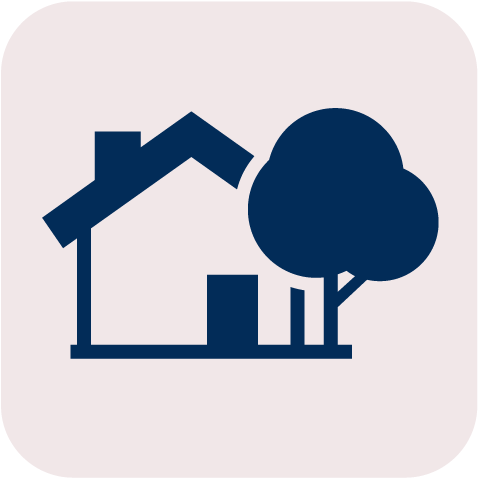 Residence
Residence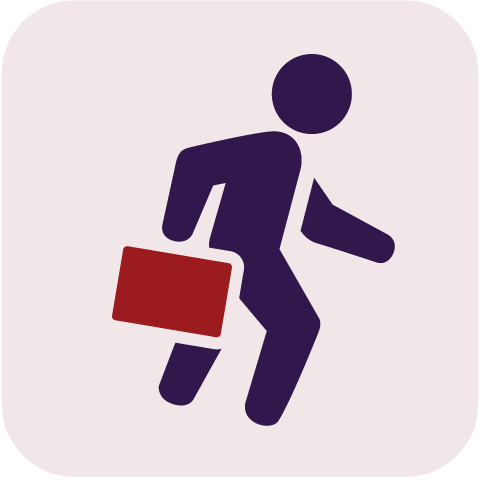 Work
Work
 Access
Access Discriminatory language
Discriminatory language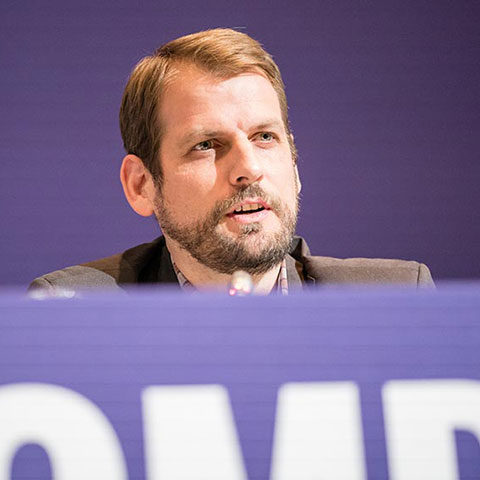
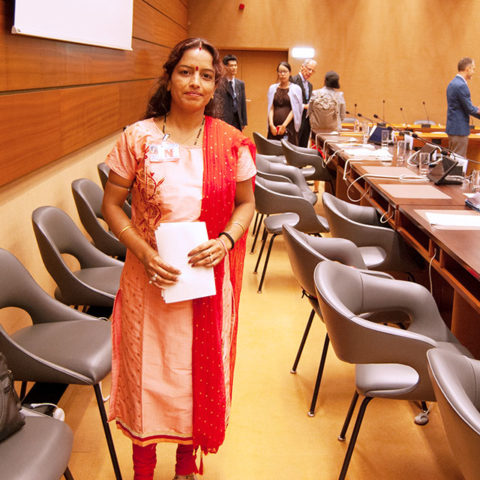

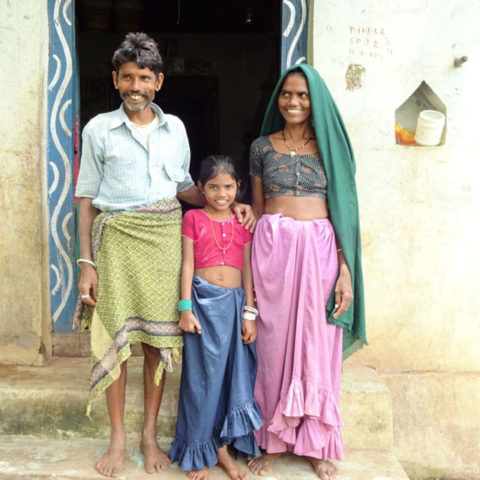
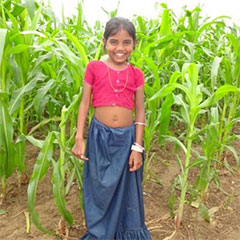 In the late spring of 2017, Neru had reconstructive surgery at the St Joseph Leprosy Centre in Madhya Pradesh. By this point, she had also developed a partial foot drop on her right leg, which meant she could no longer lift her foot at the ankle. She had a course of physiotherapy and Lepra also gave her customised protective footwear to strengthen her ankle muscles. With Lepra’s help, and through determination and family support, Neru was able to make a recovery. She could walk more easily and use her hand again.
In the late spring of 2017, Neru had reconstructive surgery at the St Joseph Leprosy Centre in Madhya Pradesh. By this point, she had also developed a partial foot drop on her right leg, which meant she could no longer lift her foot at the ankle. She had a course of physiotherapy and Lepra also gave her customised protective footwear to strengthen her ankle muscles. With Lepra’s help, and through determination and family support, Neru was able to make a recovery. She could walk more easily and use her hand again.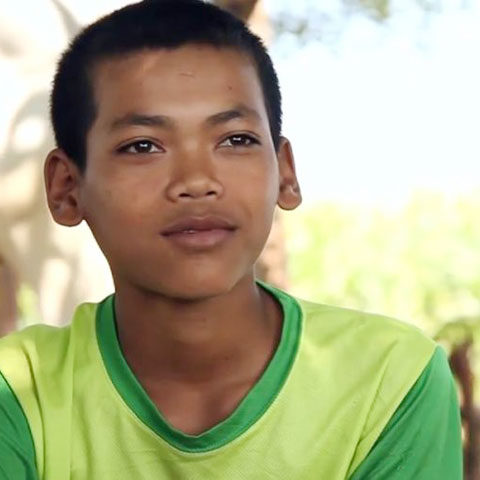
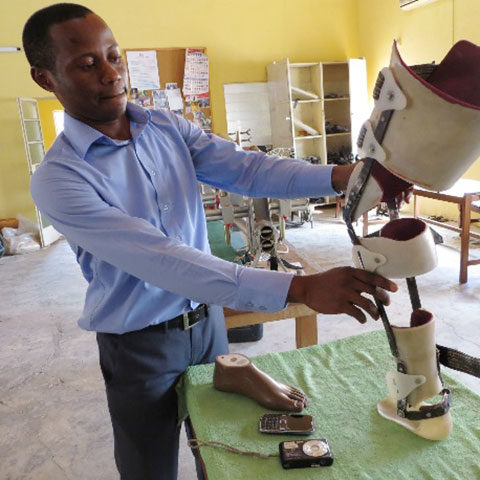
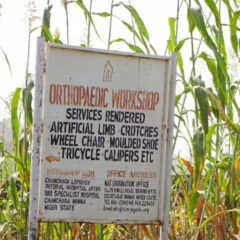
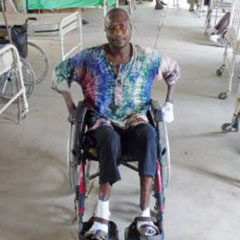

 Though her recovery was long, afterwards Binta travelled back to her hometown where she married her husband of 18 years.
Though her recovery was long, afterwards Binta travelled back to her hometown where she married her husband of 18 years.

